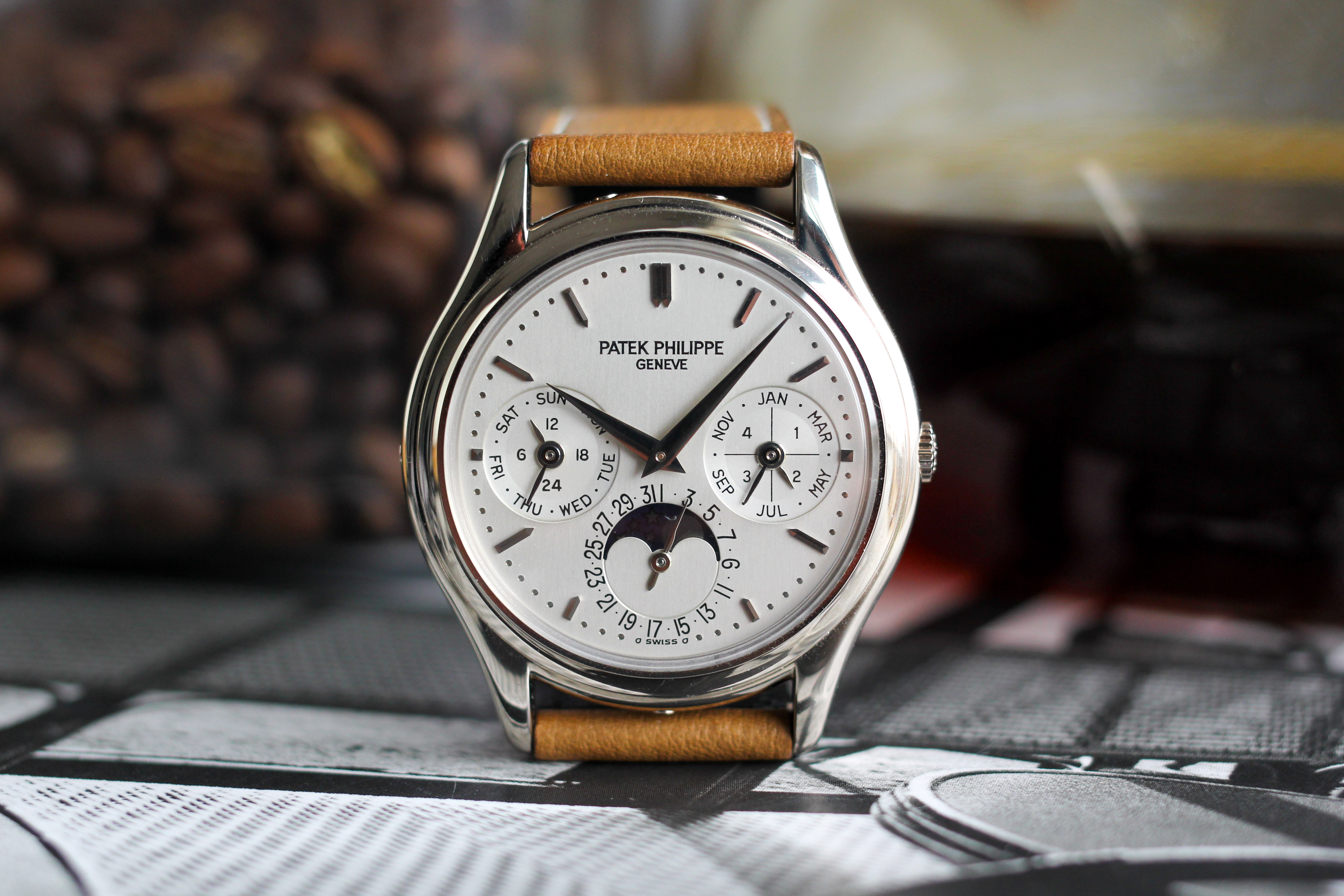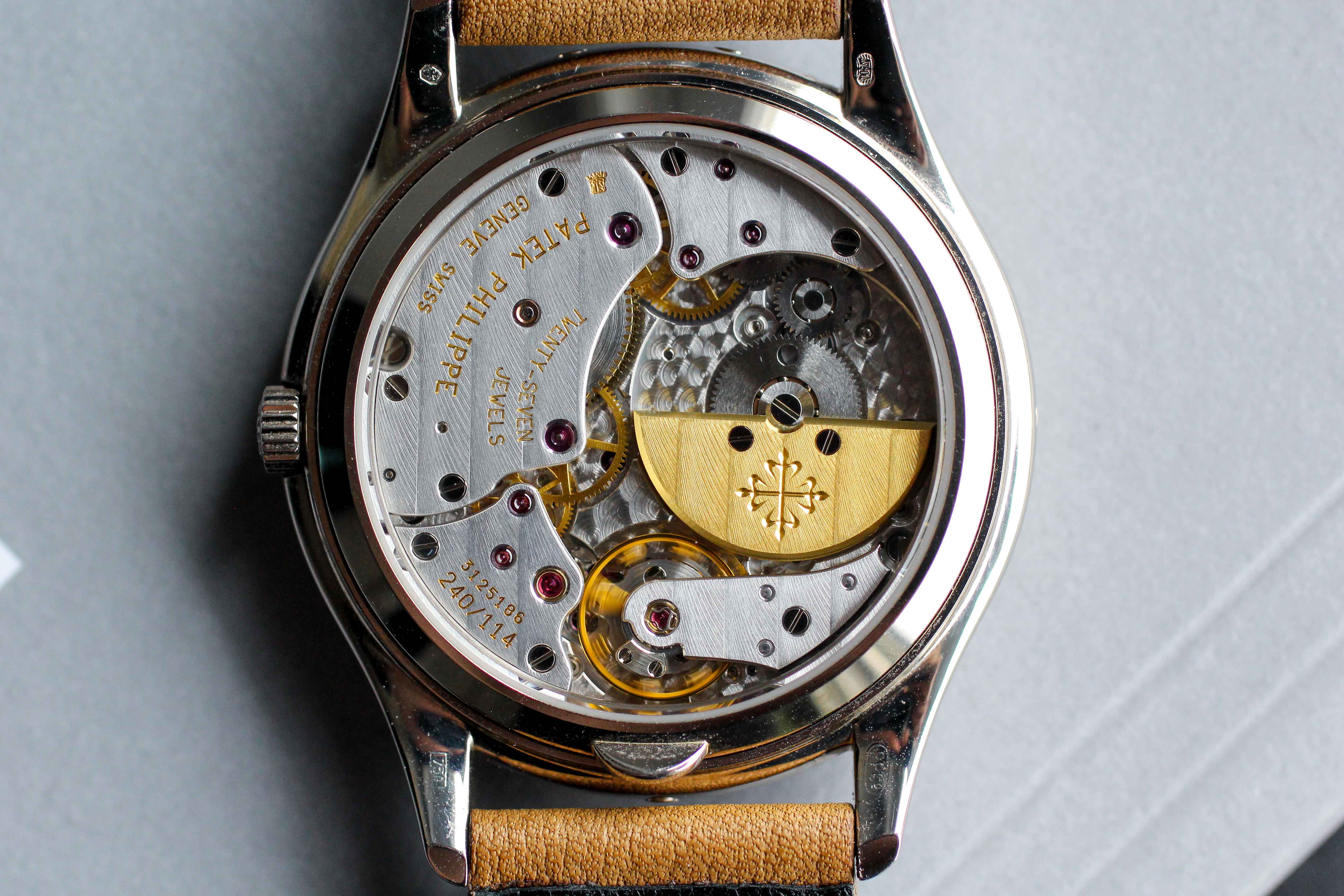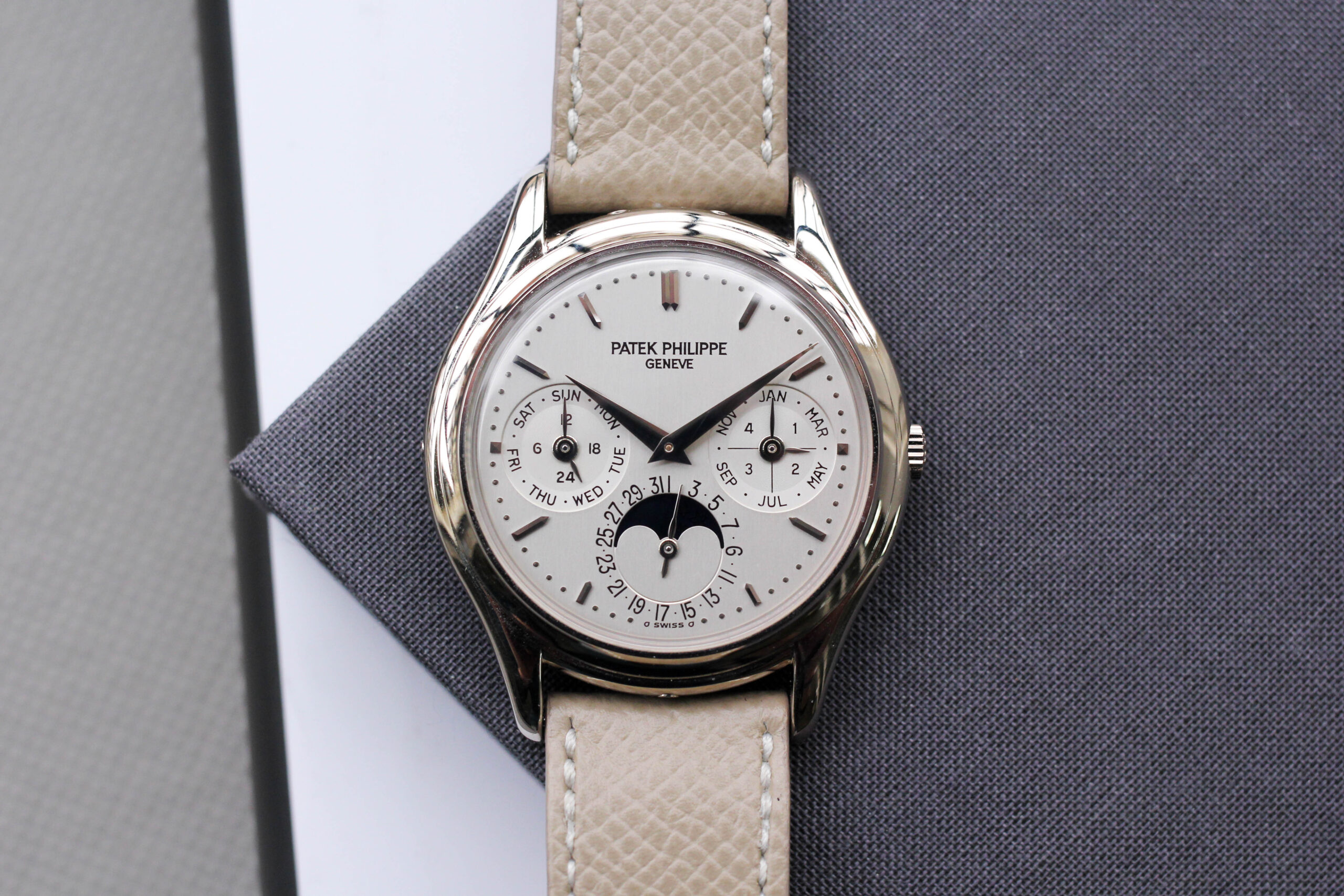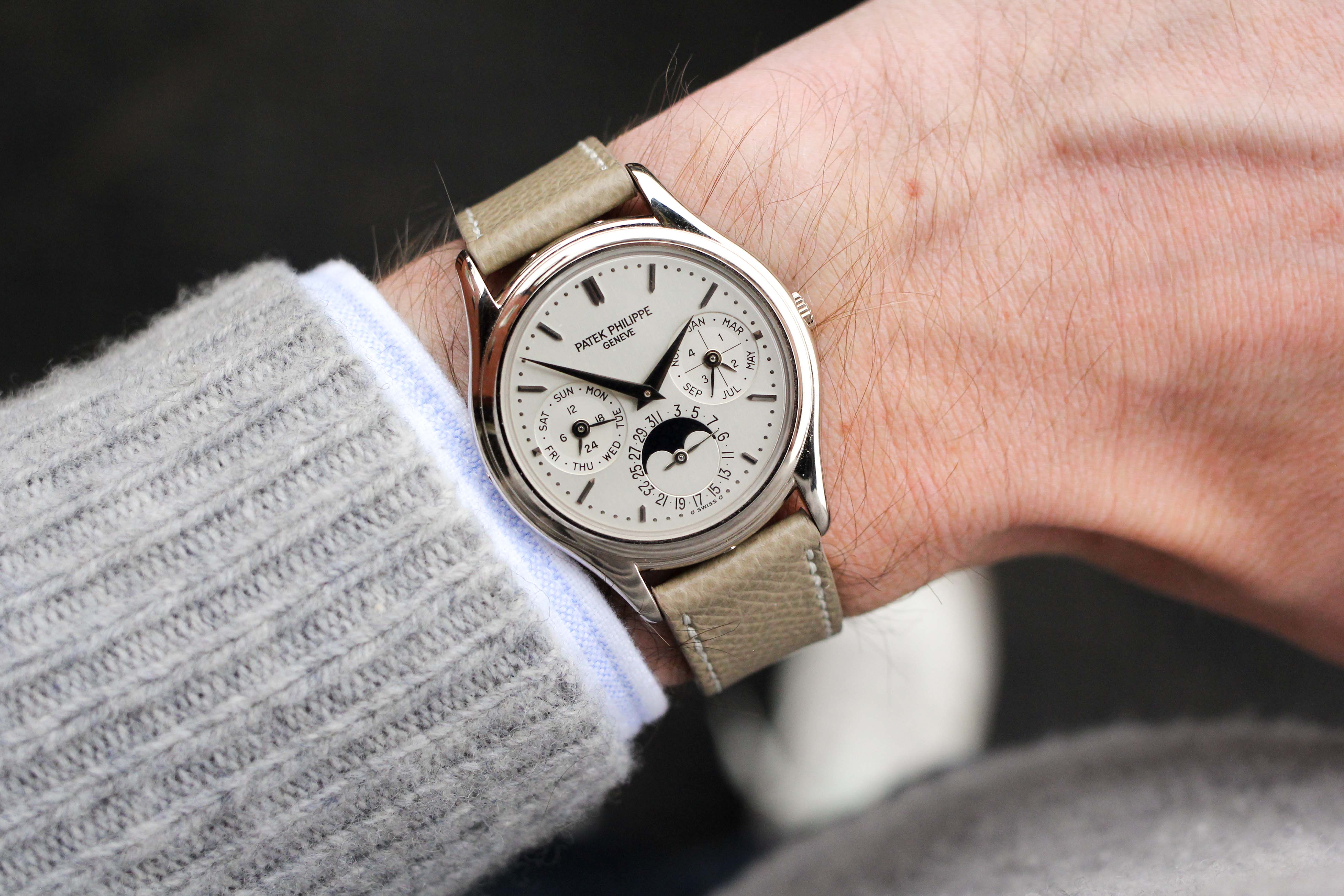This may come as a shock to you, but Patek Philippe is not a one trick pony [pause for effect]. In addition to trademarking one of the best marketing slogans ever (“You never actually own a Patek Philippe. You merely look after it for the next generation.”), they created one of the most enduring examples of a perpetual calendar wristwatch: the reference 3940. The perpetual calendar complication, considered a “grand complication,” is the most traditional expression of horological prowess, and Patek was the first brand that managed to turn it into a commercially viable (and relatively accessible) reference, with a continuous production run that spanned nearly three decades. Sure, there are many perpetual calendar wristwatches that are more expensive, more exclusive, or more ornate (and sometimes, all three), but if you were to ask a handful of serious collectors about the best perpetual calendar wristwatches of all time, the 3940 is almost guaranteed to be on the list. Hell, Philippe Stern chose to wear a 3940 daily – if it’s good enough for him, it should satisfy even the most uppity of horological snobs!
With all of that said, many of you are already aware of the 3940’s technical attributes and long-tenured production, so let’s get to what really matters…why did one end up in my collection?
For the first 4-5 years of my collecting journey, I largely focused on 1960’s sports watches (divers and chronographs) from a narrow range of manufacturers (Tudor, Universal Geneve, Omega, and Heuer). This was mostly because my knowledge base was rooted in these brands – knowing what you don’t know is a valuable tool in the vintage watch game – but also because I found the utility of dive watches and chronographs to be more applicable on a daily basis than high complications from the “Holy Trinity” (Patek Philippe, Vacheron Constantin, and Audemars Piguet). Spending mid-five figures on a perpetual calendar is a legitimate commitment for all but the truly wealthy, and for a long time, that commitment wasn’t something that was worthwhile to me. Until it was.

The importance of owning a perpetual calendar (and more specifically, this perpetual calendar) was born out of a rare moment of introspection, as I was attempting to thin out my ever-sprawling collection and focusing on where I wanted my collection to move in subsequent years. I still get excited about perfect examples of my old favorites (the hunt for great Speedies and Subs never bores), but the allure of Patek Philippe as a brand only becomes stronger the more you’re exposed to it, and after researching Patek’s offerings from the past 20-30 years, my path towards the 3940 began to unfurl.
I had been aware of the 3940 for a couple of years, mainly thanks to Ben’s rationale for including one in a “two watch collection” and Sean Song’s very personal story of his 3940G, and the more I researched, the more I became set on finding one. The reference was a bonafide icon from the most important watchmaker in the world, and to my eyes, the 3940’s design was far superior to the subsequent reference 5140 (which was larger, included more cluttered typography, and was more expensive). But despite those important attributes, the 3940 rarely seemed to get much attention from the collecting community and remained among the most “affordable” of complicated Pateks.
I’m not going to turn this into a pitch about how the 3940 is undervalued, but the most common explanation for the relative affordability of such an iconic watch is that Patek made a lot of 3940s (I’ve seen ~7,000 estimated for total production) and it was continuously produced for 21 years across four executions. While this makes it one of the most “ordinary” of Patek’s highly-complicated offerings, estimates for Rolex’s annual ceramic Daytona production range from 10,000-14,00 per year, while the 3940 took over two decades to reach 7,000. For an investor seeking above-market returns and a splashy inclusion at Phillips in 3-4 years, that all makes sense. But that didn’t explain why I could buy a perfect 3940G for the same price as a 5512 Submariner…and it’s something I still can’t explain to this day.

Earlier in this post, I alluded to my fairly narrow focus for the first five years that I “seriously” collected. Aside from having a deep knowledge of those brands, there was another advantage to the narrower focus – they often surfaced on eBay and Craigslist with reasonable prices and terrible pictures, which was in some ways a purer form of treasure hunting. I made hay with that approach for a long time, but as the vintage watch market has matured and I’ve been drawn into the siren song of Daytonas, Pateks, and low production watches like the Movado M95, there was no path to going it alone. I’ve warmed up to the dealer channel in the past few years and now actually consider a small group of dealers to be friends of mine, which has made pursuits such as the 3940 a possibility.
One of those dealers, Eric Wind, knew that a 3940 was on my short list and had the idea to reach out to an older gentlemen he’d met who had considered placing his 3940G in a Christie’s auction, but ultimately did not. After reinitiating dialogue with the seller, it was apparent that a deal could come together quickly, and shortly thereafter, I was a proud entrant into the Patek family.
Due to an embarrassingly long hiatus from writing, I’ve now owned the 3940G for about a year and a half, and have zero regrets about the decision to start my Patek relationship with this reference. The 36mm case has considerable heft (it’s solid gold, if I didn’t explicitly mention that) and feels as if every millimeter has been fully utilized. My late-series dial also has the ability to change appearance based on the lighting – as you can see in the pictures throughout, it appears almost an ivory white, but in the last picture of the photo gallery (next to one of my Movado M95s) it’s taken on a metallic sheen. Lastly, there’s a simple and subtle beauty in the small details. The dial typography is thin and has room to breathe, the subdial sizing is balanced, and the sapphire crystal augments its slim profile. On a strap such as the one pictured here, the 3940 can almost be dismissed as a small, dressy chronograph from a distance, only revealing its profile to those who look closer or recognize the beast that it truly is.
Ultimately, I believe the 3940 is one of the best wristwatches ever made – not just perpetual calendars, but wristwatches. It’s a pure distillation of one of the most challenging complications in horology and is note-perfect in just about every sense. While some may decry its 36mm diameter, or lament its lack of collectability due to “high” production figures, I believe any true watch lover will have a hard time resisting its charms. Try it in the metal and you’re gonna like the way you look…I guarantee it.


The Nitty Gritty
Patek’s reference 3940 is one of the longest-running production references in the history of the company, as it was continually produced from 1985 to 2006 and spanned four different case metals (yellow gold, rose gold, white gold, and platinum) with four different dial iterations. The 3940 is powered by the automatic caliber 240Q and approximately 7,000 examples were produced through its production run, when it was eventually succeeded by the reference 5140. In case you’re not familiar with the perpetual calendar’s dial layout, the right subdial has indicators for the leap year cycle and current month, while the left subdial contains the day of the week and an AM/PM indicator (0-24 hours). The left subdial also has a subtly darker tone to the lower portion in order to quickly delineate between the night hours and day hours, though my particular example has not developed the patina that is so often visible on other examples. Finally, the 6 o’clock subdial tracks the day of the month and the moonphase. Not bad for a watch with a 36mm diameter, 3.8mm movement height, and 9mm total thickness, eh?
Market Observations (Summer 2022)
When I originally wrote this article in the summer of 2019, values had been steady across case metals for quite some time. Back then, yellow gold (3940J) variants were found near the $30K mark, while the 3940G (white gold) was typically in the $40K range. Finally, platinum cases (3940P) commanded a further premium over gold cases, often selling for ~$50K. These prices also excluded first series examples, which carried (and still do carry) a pricing premium of 20-25% over later iterations based on condition and accompanying box/papers or provenance. The first series are visually differentiated by sunken subdials at 3 o’clock and 9 o’clock, as well as a solid caseback. Finally, the dials came in three languages – English, Spanish, and German. English variants carry a slight premium over the Spanish and German dials, though only to the tune of 5-10%.
Fast forward three years and prices have moved fairly dramatically for all 3940 references – to the tune of ~50% increases for each (the 3940G is now trading for ~$60K). While this seems like a huge move, I can pretty easily make the case that values are still reasonable, particularly when compared to the latest prices for 3970 perpetual chronographs (which are now clearing $150K regularly for white gold models). In my view, the 3940 wears better on the wrist due to its thinness and if it isn’t already, it will eventually be seen as one of the defining references produced by Patek Philippe. In today’s (often vexing) watch world, $60K for an iconic perpetual calendar from Patek Philippe sounds like a bargain.
As for what the future of the 3940 holds from a pricing perspective, your guess is as good as mine. The sheer number of examples will likely (unfairly) depress prices to a certain extent, but the Swiss watch industry doesn’t produce watches like the 3940 anymore and it has certainly aged well in its first 36 years.








